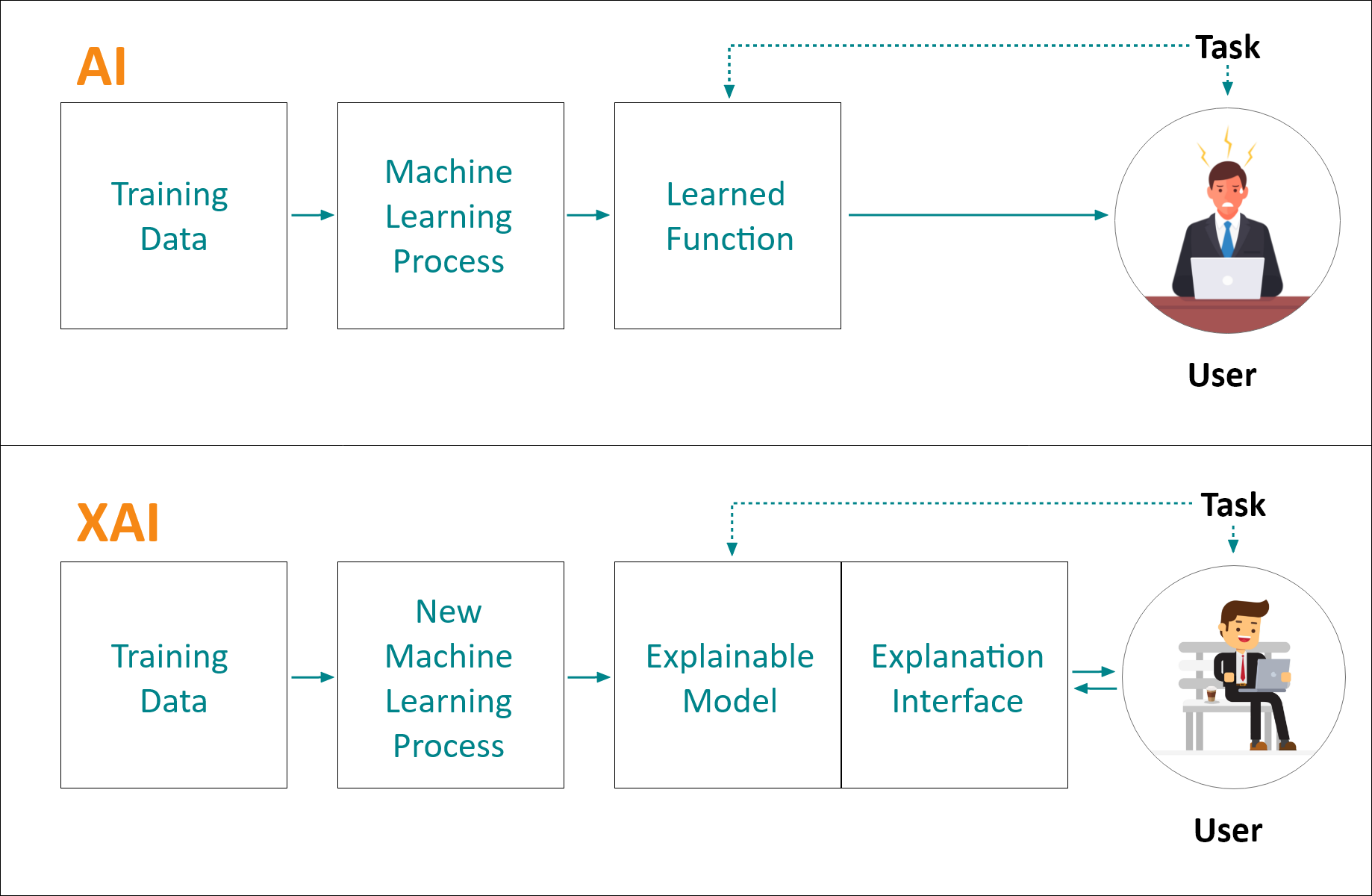
Continuous advancements in artificial intelligence have led to the development of many AI solutions. These solutions are meant to be developed to behave autonomously. It would perceive, learn, decide, and act on its own, causing a dilemma to trust or not their decision, without knowing the logic that concluded the decision. This inability of machine learning to explain their decision and actions in human interpretable form has led to Explainable AI (XAI). For instance, in cancer surgery, if AI decides to cut out a vital organ, and the surgeons are unable to understand the decision, they cannot risk the life of the patient. So if AI makes an incorrect decision, XAI provides a chance to identify the source and reason for the error and correct it.
What is Explainable AI and its Necessity
Trained AI algorithms work by taking the input and providing the output without explaining its inner workings. XAI aims at pointing out the rationale behind any decision by AI in such a way that humans can interpret it.
Deep learning works with neural networks just like the human brain works with neurons, where it uses a massive amount of training data to learn and identify patterns. It would be very difficult, or rather impossible, to dig into the rationale behind Deep Learning's decision. Decisions like credit card eligibility or loan sanction are quite important to be explained by XAI. However, a few wrong decisions would not impact much. Whereas, in the case of healthcare, as discussed earlier, a doctor could not provide the appropriate treatment without knowing the rationale behind AI's decision. Surgery on the wrong organ could be fatal.
4 Principles of Explainable AI
The US National Institute of Standards and Technology has developed four principles as guidelines to adopt fundamental properties of Explainable Artificial Intelligence (XAI) efficiently and effectively. These principles apply individually and independently from each other and guide us to better understand the working of the AI models.
1. Explanation:
This principle obligates the AI to generate a comprehensive explanation for humans to understand the process of generating the decisions with the required evidence and reasons. The standard for this evidence and reasons is governed by the next three principles.
2. Meaningful:
This principle is satisfied when a stakeholder understands the explanation provided in the first guiding principle. The explanation should not be complex and understood by the users on a group as well as individual level.
3. Explanation Accuracy:
The accuracy at which the AI explains the complicated process of generating the output is critical. Accuracy metrics may differ for individual stakeholders in terms of their explanation. The expected accuracy is 100% for all the stakeholders to understand the logic.
4. Knowledge Limits:
The last principle of XAI explains that the model can only be operated under the special conditions it has been modeled for. It is expected to operate under its limited knowledge to avoid any sort of discrepancy or unjustified business outcomes.
How does XAI work?
These principles help us define the expected output from the XAI model and how an ideal XAI model should be. However, it doesn't indicate how the output has been achieved. Subdividing the XAI into three categories to better understand the rationale:
1. Explainable data: What data is used to train the model? Why the particular data is selected? How much biased is the data?
2. Explainable predictions: What features did the model use that lead to the particular output?
3. Explainable algorithms: How is the model layered? How do these layers lead to the prediction?
Based on individual instances, the explainability may change. For example, the neural network can only be explained using the Expainable Data category. Research is ongoing that is focused on finding ways to explain the predictions and algorithms. At present there are two approaches:
a. Proxy Modeling:
A different model from the original is used to approximate the actual model. This may result in different outcomes from the true model outcomes, as it is just an approximation.
b. Design for Interpretability:
The actual model is designed in such a way that it is easy to understand its working. However, this increases the risk of reduced predictive power and overall accuracy of the model.
The XAI is referred to as the White Box, as it explains the rationale behind its working. However, unlike the black box, its accuracy may decrease in order to provide an explainable reason for its outcome. Decision trees, Bayesian networks, sparse linear models, and many more are used as explainable techniques. Hopefully, with the advancements in the field, new studies will come up to increase the accuracy of the explanations.
Critical Industries for XAI
XAI would be helpful in those industries where machines play a key part in decision-making. These use cases might also be useful in your industry, as the details may vary, but the core principles remain the same.
1. Healthcare in XAI
As discussed earlier, the decisions made by AI in healthcare impact humans in a very critical way. A machine with XAI would help the healthcare staff save a lot of time, which they might use to focus on treating and attending to more patients. For example, diagnosing a cancerous area and explaining the reason in a matter of time helps the doctor to provide appropriate treatment.
2. Manufacturing in XAI
In the manufacturing industry, fixing or repairing equipment often depends on personnel expertise, which may vary. To ensure a consistent repair process, XAI can help provide ways to repair a machine type with an explanation, record the feedback from the worker, and continuously learn to find the best process to be followed. The workers need to trust the decision made by the machine in order to risk working on the equipment repair, which is the reason XAI becomes useful.
3. Autonomous vehicles in XAI
A self-driving car seems great until and unless it has made a bad decision, which can be deadly. If an autonomous car faces an inevitable accident scenario, the decision it makes impacts greatly on its future use, whether it saves the driver or the pedestrians. Providing the rationale for each decision an autonomous car takes, helps to improve people's security on the road.
End Note
In the blog we discussed what is Explainable AI, why is it necessary, its principles, and how it works. We also looked at industries where the XAI is quite important and how it can be beneficial with an example.
We, at Seaflux, are AI undefined Machine Learning enthusiasts, who are helping enterprises worldwide. Have a query or want to discuss AI projects where generative AI can be leveraged? Schedule a meeting with us here, we'll be happy to talk to you.

Jay Mehta
Director of Engineering










